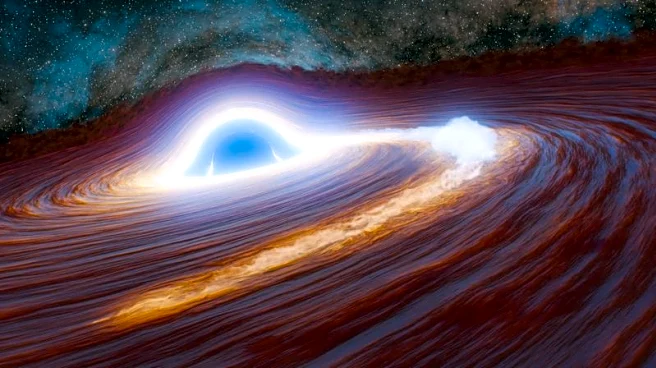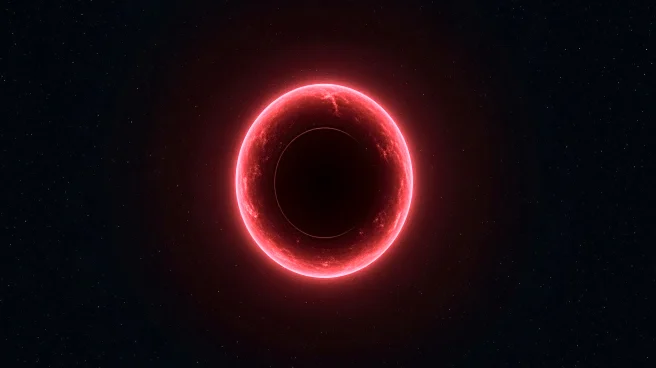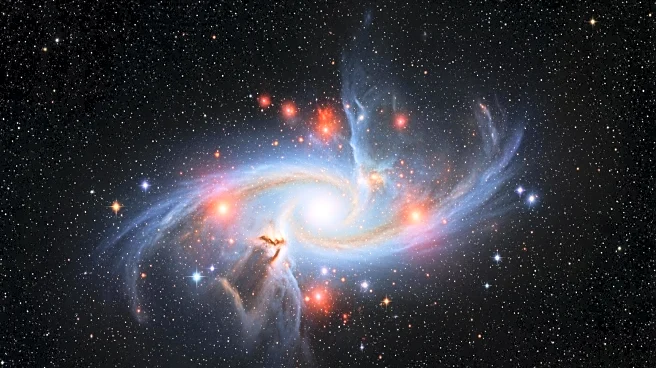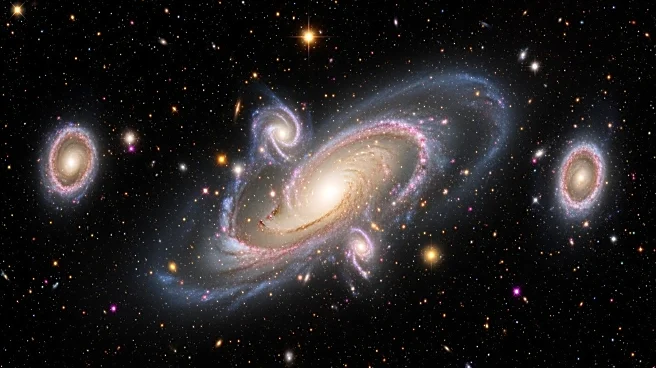What's Happening?
Scientists have successfully created a three-dimensional map of the atmosphere of the exoplanet WASP-18b using data from the James Webb Space Telescope (JWST). This gas giant, located approximately 400 light-years from Earth, is tidally locked to its
star, meaning one side constantly faces the star while the other remains dark. The mapping was achieved through a technique known as eclipse mapping, which measures changes in light as the planet passes behind its star. This method allows researchers to determine temperature variations and cloud structures in the planet's atmosphere. The study, published in Nature Astronomy, reveals distinct temperature zones, including a hotspot where temperatures are high enough to potentially disintegrate water molecules.
Why It's Important?
The creation of a 3D atmospheric map of WASP-18b marks a significant advancement in exoplanet research, offering insights into atmospheric dynamics and composition. This breakthrough could pave the way for similar studies on other distant planets, enhancing our understanding of planetary systems beyond our own. The ability to observe and analyze atmospheric conditions on exoplanets can inform theories about planet formation and evolution, potentially impacting future space exploration missions and the search for habitable worlds. The findings also demonstrate the capabilities of the JWST, reinforcing its role as a critical tool in astronomical research.
What's Next?
Further observations using the JWST could enhance the resolution of WASP-18b's atmospheric map, allowing scientists to explore the atmospheres of other gas giants with similar characteristics. Continued research may lead to more detailed models of exoplanet atmospheres, contributing to a deeper understanding of their physical and chemical properties. This could influence the development of new technologies and methodologies for studying distant planets, as well as inform the search for extraterrestrial life by identifying planets with conditions conducive to life.
Beyond the Headlines
The study of WASP-18b's atmosphere highlights the complex interactions between a planet and its star, offering a glimpse into the extreme conditions that can exist on exoplanets. The discovery of water molecule disintegration in the hotspot region challenges existing theories and prompts further investigation into the effects of stellar radiation on planetary atmospheres. This research underscores the importance of interdisciplinary collaboration in advancing our knowledge of the universe, combining astronomy, physics, and planetary science to unravel the mysteries of distant worlds.














